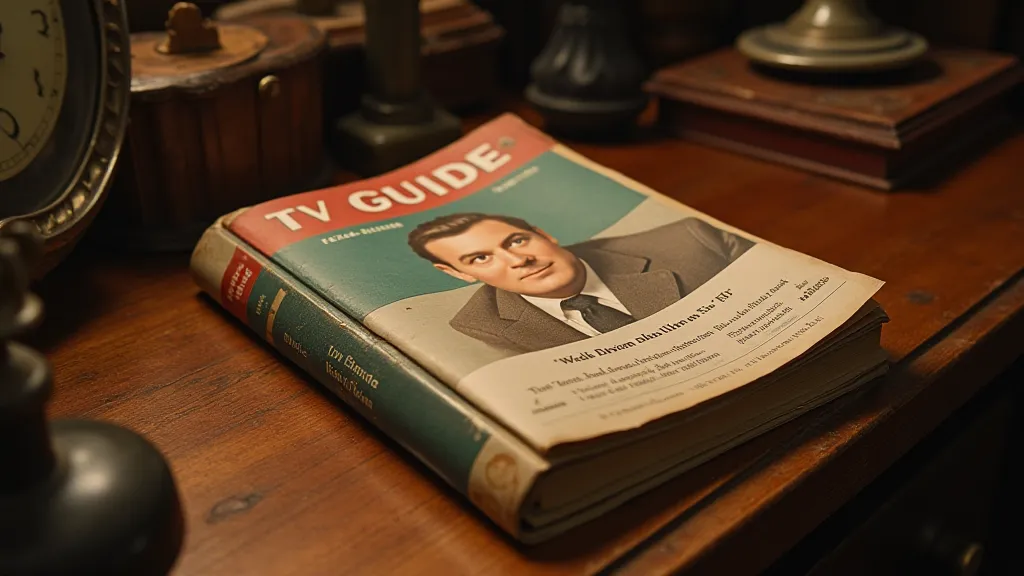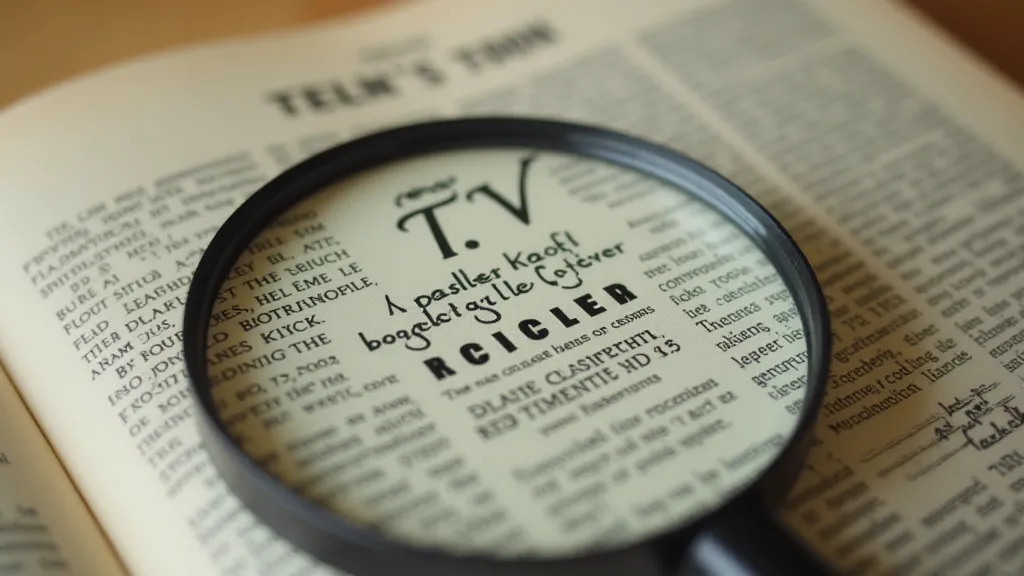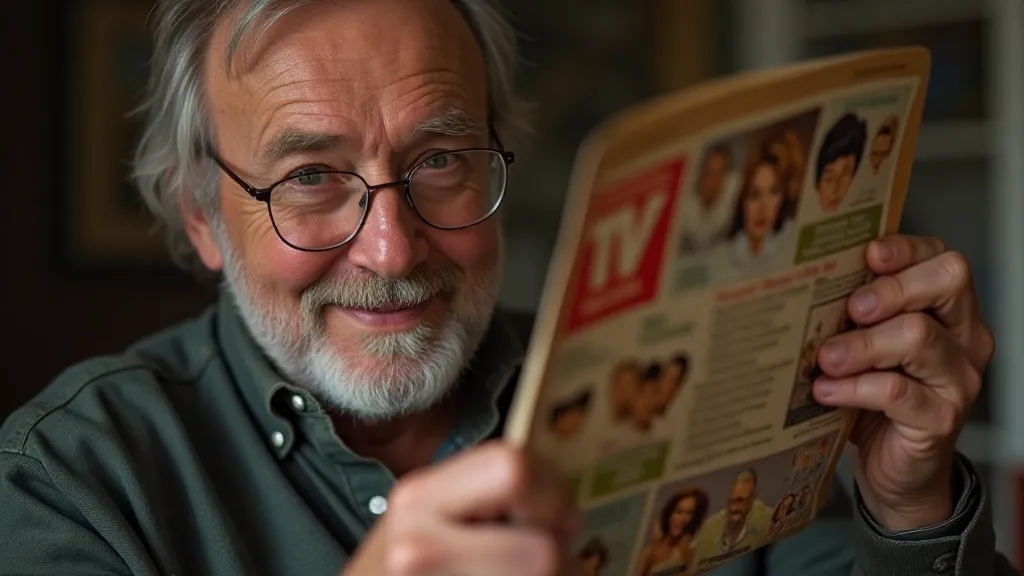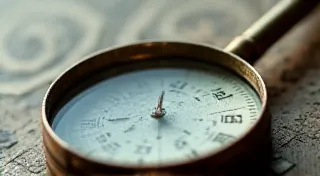A Collector’s Codex: Authentication Tips for First Edition TV Guide Memorabilia
There’s a quiet thrill in holding history in your hands. When it comes to collecting vintage TV Guides, that thrill is amplified tenfold. It’s not just about the paper and ink; it’s about holding a portal to a bygone era, a snapshot of American life, a testament to the power of television’s golden age. For those pursuing the holy grail – a first edition TV Guide – the journey is paved with challenges, requiring a collector’s eye, a historian's curiosity, and a degree of detective work. This isn’t simply about acquiring; it's about authenticating, preserving, and truly appreciating a piece of cultural heritage.

The Genesis of an Icon: A Historical Overview
Before diving into authentication, it's crucial to understand the context. The first issue of TV Guide, dated December 29, 1953 – January 1, 1954, wasn't the result of overnight success. It emerged from the ashes of a preceding publication, “Tele-Vue,” which struggled to find its footing. The brainchild of Walter Annenberg, TV Guide revolutionized television programming information, consolidating listings from various networks and local stations into a single, comprehensive magazine. The initial print run was ambitious – over 300,000 copies – and its immediate popularity was undeniable. Imagine a world before ubiquitous online guides; this was the definitive source for what was on, and when.
The early years (1953-1960) are particularly significant for collectors. The magazine's format and content evolved rapidly during this period, and first editions from these years are significantly rarer and more valuable than later issues. Understanding these nuances is the first step in verifying authenticity. Beyond mere listings, the early TV Guides offer a fascinating glimpse into the changing landscape of American entertainment – the rise of sitcoms, the dominance of anthology dramas, and the growing cultural impact of television.
Decoding the Details: Identifying First Editions
Authenticating a first edition TV Guide isn't as straightforward as checking a date. Numerous factors come into play, and a keen eye for detail is paramount. Let's break down some key identifiers:
- The Date and Issue Number: This is the obvious starting point. The first edition carries the date December 29, 1953 – January 1, 1954, and has no issue number printed. Later issues, even those from the early years, will have a corresponding issue number.
- Cover Design and Photography: The iconic cover of the first edition features Bob Hope and Lucille Ball. The image quality, font style, and overall design are distinct. Reproductions often fall short of replicating this accuracy. Be wary of covers that appear "too clean" or have suspiciously sharp image resolution.
- Paper Quality and Printing: Early TV Guides were printed on a lower-grade paper stock, resulting in a slightly textured feel. The printing itself was less precise than later iterations. Reproductions frequently use higher quality, smoother paper, which is an immediate red flag.
- Internal Content: The content within the first issue is also a crucial indicator. Look for specific advertisements, editorial content, and programming listings that are unique to that inaugural edition. A comparison with digitized copies of the first issue (available on our platform, of course!) can be invaluable.
- Copyright Information: The copyright notice at the bottom of the inside front cover will indicate the copyright holder and year. This aligns with the date of publication and should be consistent with the purported first edition.

Common Forgeries and How to Spot Them
The value of first edition TV Guides has inevitably attracted forgers. Recognizing common forgery techniques is essential for any serious collector. Here's what to watch out for:
- Reprinted Covers: Some forgers will print new covers with the classic Bob Hope and Lucille Ball image and insert them into later-dated issues. Thoroughly examine the cover’s paper and printing quality.
- “Reconstructed” Issues: These are created by combining elements from different issues to create a false first edition. Carefully cross-reference the content with known first edition copies.
- Photocopies and Digital Prints: While less sophisticated, these reproductions are still prevalent. The paper will lack the authentic texture, and the image quality will be noticeably inferior.
- Altered Dates: Some unscrupulous sellers attempt to alter the date on later issues to make them appear to be first editions. Look for inconsistencies in the printing and typography.
Preservation and Restoration: A Collector’s Responsibility
Once you’ve authenticated a first edition TV Guide, responsible preservation is key. These are fragile artifacts, vulnerable to environmental damage. Store them in archival-quality sleeves and boxes, away from direct sunlight and extreme temperatures. Avoid aggressive restoration attempts; minor imperfections are part of the magazine's history and contribute to its authenticity. While minor cleaning with archival-safe materials is acceptable, avoid any attempts to "perfect" the magazine – a pristine first edition is a significant red flag.
Restoration is a tricky subject. While some collectors may attempt to repair tears or reinforce spines, it's generally best left to professionals specializing in paper restoration. Any restoration work should be documented, as it can impact the magazine's value. Remember, a genuine first edition TV Guide isn't just a magazine; it's a window into the past, a tangible connection to a pivotal moment in American television history. The joy of collecting lies not just in acquisition, but in the appreciation of its journey through time.
The Rarity Spectrum: Pricing and Value
The value of a first edition TV Guide varies significantly based on its condition. A copy in mint condition can fetch a substantial sum, while a well-worn copy will be considerably less valuable. Factors such as the presence of original mailing labels, any markings or annotations, and the overall presentation all contribute to its worth. Consult reputable auction houses and online marketplaces to gauge current market prices. Don’s forget to factor in the cost of authentication and professional grading, which can further confirm the magazine’s authenticity and enhance its value.

Collecting vintage TV Guides, particularly first editions, is more than a hobby; it’s a passion, a historical pursuit. The journey to authenticating these treasures is challenging but immensely rewarding. With diligence, knowledge, and a touch of reverence, you can uncover a piece of television history and become a custodian of a truly remarkable cultural artifact.





